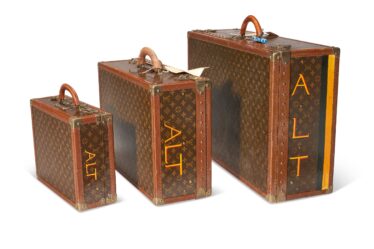
My wife, Jackie, and I used to be a lot more rock’n’roll than we are now. Before we moved to the country, we lived in Greenwich, south-east London, and we used to get a bit ginned-up and very excited about things. I remember it being quite close to my birthday in March; we were watching some David Attenborough thing on TV. They had a decorator crab on, which creates a camouflage by encrusting itself with whatever it finds around it, making it near invisible. I fell in love with the whole concept and remember waxing lyrical about dropping beads, sequins and diamonds into a tank so that a decorator crab could use them.
Obviously, I was extraordinarily, grandiloquently overenthusiastic and my wife was so desperate to grant my wish that she did indeed buy me a decorator crab for my birthday, at considerable inconvenience and, I would imagine, expense. Of course, the problem with a decorator crab is that you can’t just buy it a little bed and a lead; you need a whole ecosystem. Basically, we ended up with a coral reef in our kitchen.
We called him Caligula – although I don’t think it really suited him. You always think of Caligula as being incredibly spoilt and petulant, but there was something stoical about my crab. We then had a spending frenzy that resulted in us acquiring as many colour-coordinated fish as we could get. Of course, picking fish based purely on the Pantone colour chart meant we had quite a few disasters. “Oh my God, I found a fish in the perfect shade of magenta!” It would turn out to be incredibly poisonous to all the other fish, or get eaten immediately by something bigger.
Then there is the maintenance of a fish tank, which is unbelievably complicated. My wife hit upon the idea of getting a contract with a guy to come and do it. This meant that costs became stratospheric, because the decorator crab basically had his own nanny. He would notice a dead fish and offer to replace it and we would say: “Oh yes, find something pretty.” We would then end up with fish that were endangered, expensive, near mythical! The money just kept going up and up.
But Caligula was a fine decorator crab, quite jolly. I used to get a bit of a pincer wave sometimes if I walked past the tank. The children and I would drop beads and sequins in there. We lived close to Greenwich market, where we would find little bits of china. I had this vision that, after a while, Caligula would create this accretion on his shell of little china hands of Victorian dolls and cherub faces, and that I would end up with such an unbelievably beautiful decorator crab that the world would see it as my greatest work. Sadly, Caligula was fine on the sequins, all right on the beads, but he did not like the bits of china.
It didn’t end well. The minute the summer holidays dawned, I would drive to our house in Cornwall. We had a wonderful guy housesitting in London and I remember having a message from him saying that he wasn’t sure what was going on with the heating, but it was all a bit hot. I wrote it off, because it was summer, but it turned out that the ridiculously over-specced farmhouse range we had in our kitchen had a fault and wasn’t turning itself off.
When I got back, the house was indeed very hot. The tank was looking murky and I realised it was because most of the fish in there were bouillabaisse-d. But Caligula was on the bottom of the tank with his pincer up. I thought: “At least Caligula has survived.” A couple of days later, he was in exactly the same place. His exoskeleton had been fused to the spot, leaving him almost entirely hollow inside, the tank cleaning guy said. It was very sad. I never got over the fact that he had died in a heroic pose. He looked like a crab equivalent of the Colossus of Rhodes.
I was so brought down by the whole thing that we gave the tank to the children’s primary school. They actually looked after it and made sure that it wasn’t so close to a farmhouse range.
Several months later, I was watching a programme about bowerbirds and, in a flight of enthusiasm about the fact that satin bowerbirds build nests only with blue things, I thought: “Oh, we could have a bowerbird!” – before I remembered. Be careful what you wish for.


